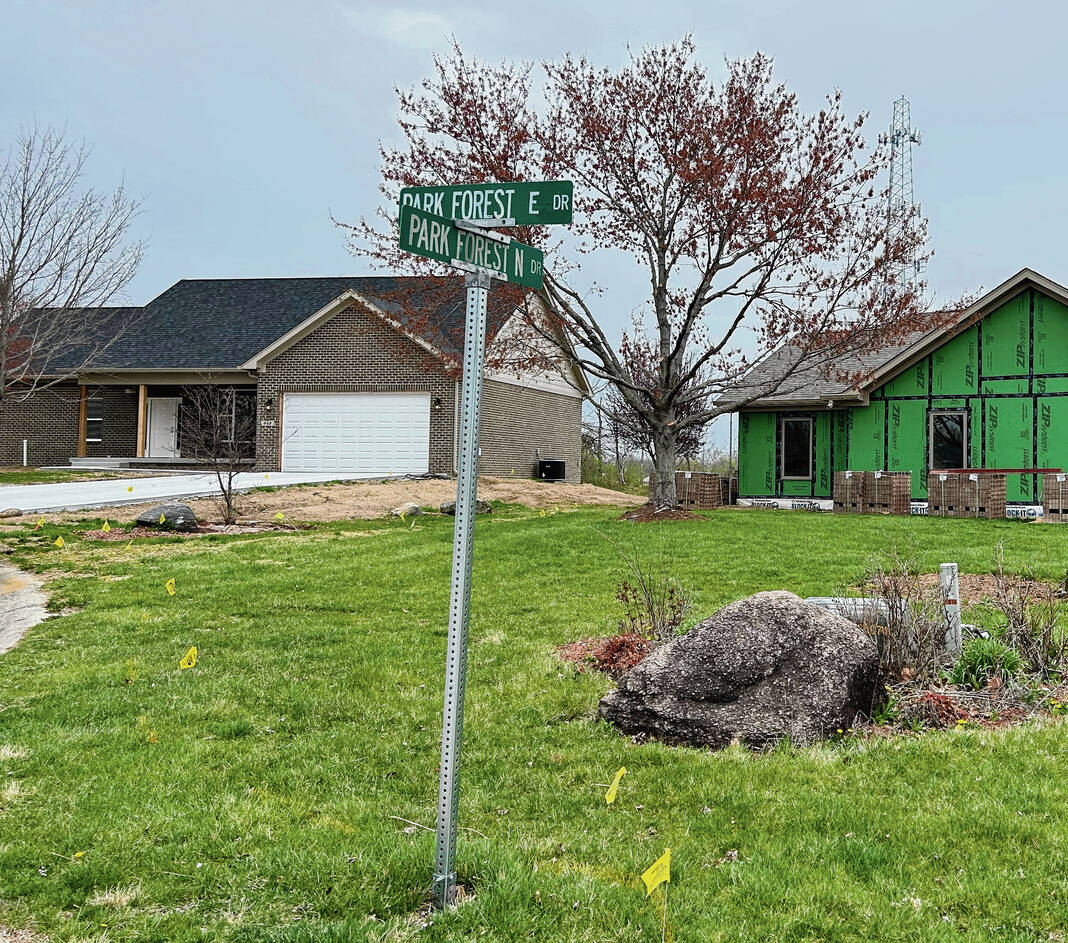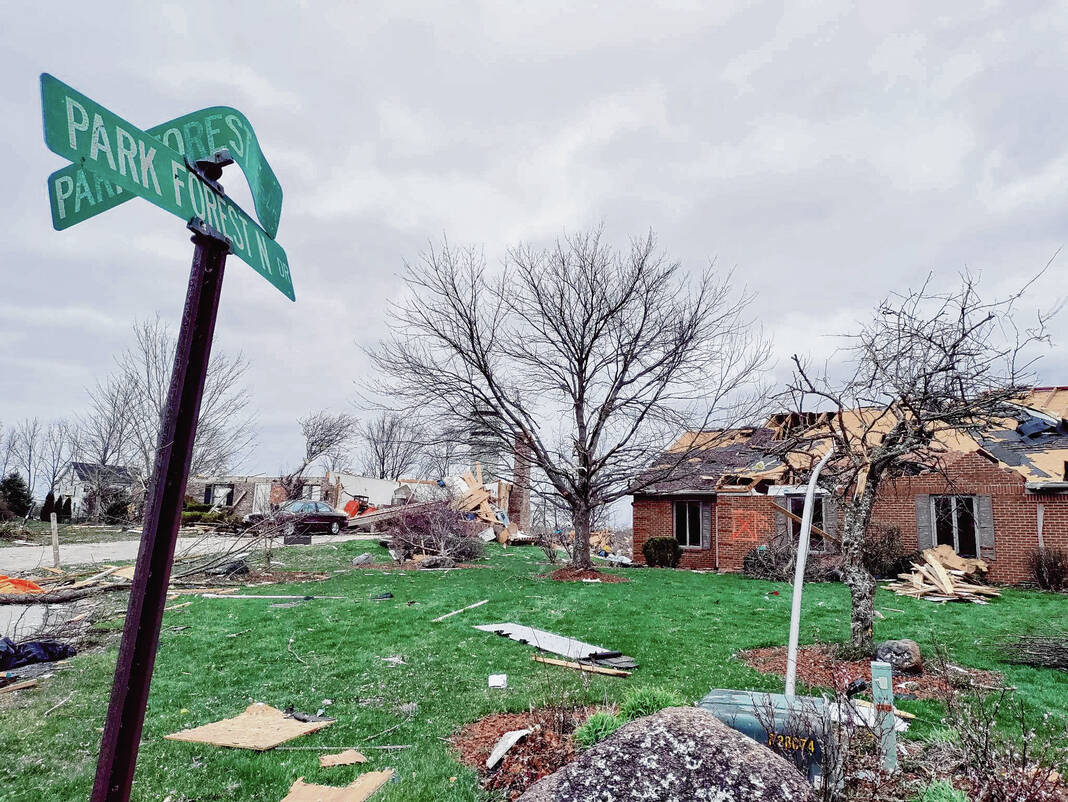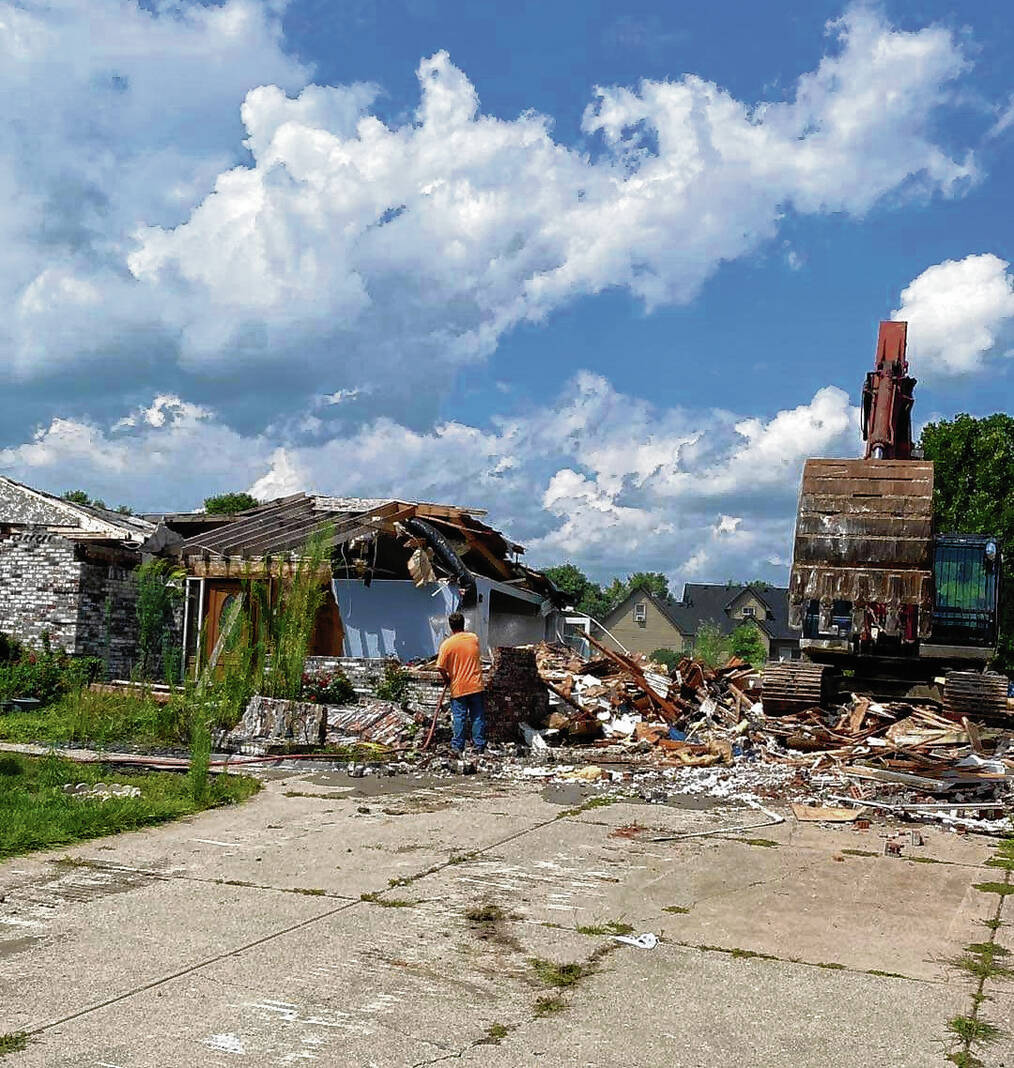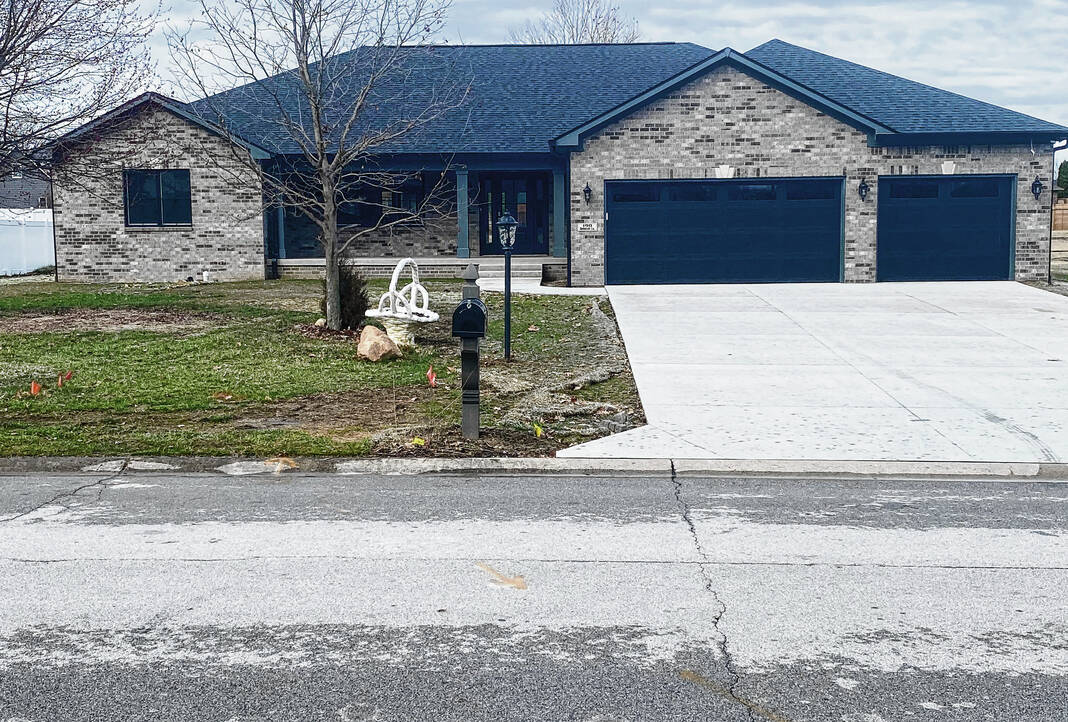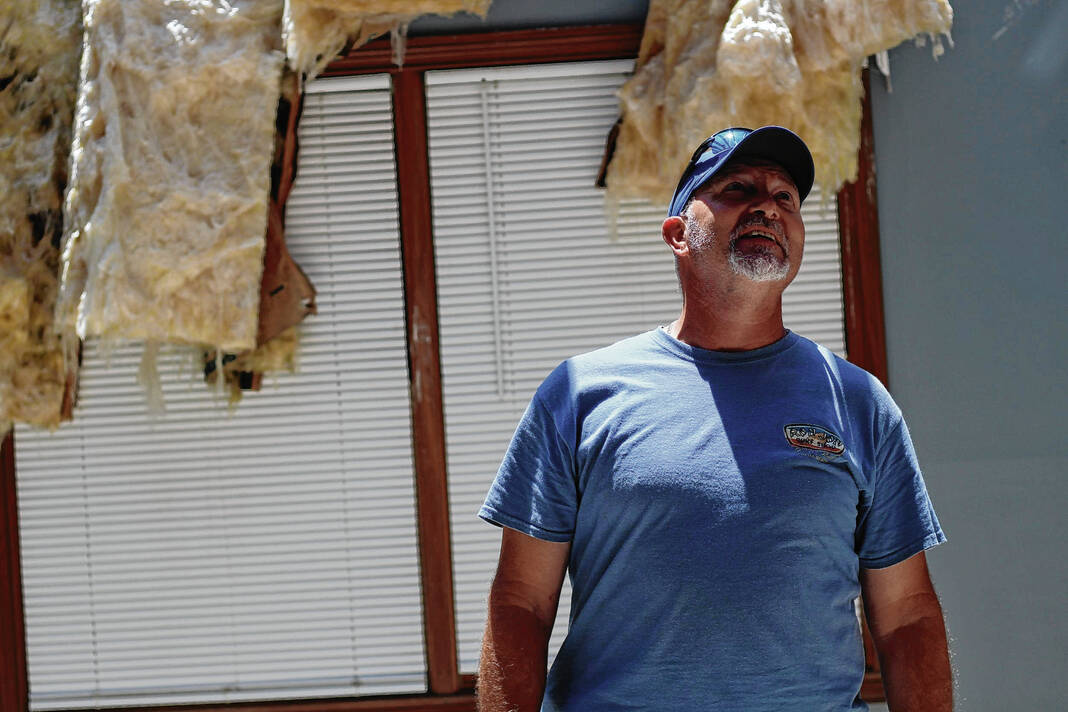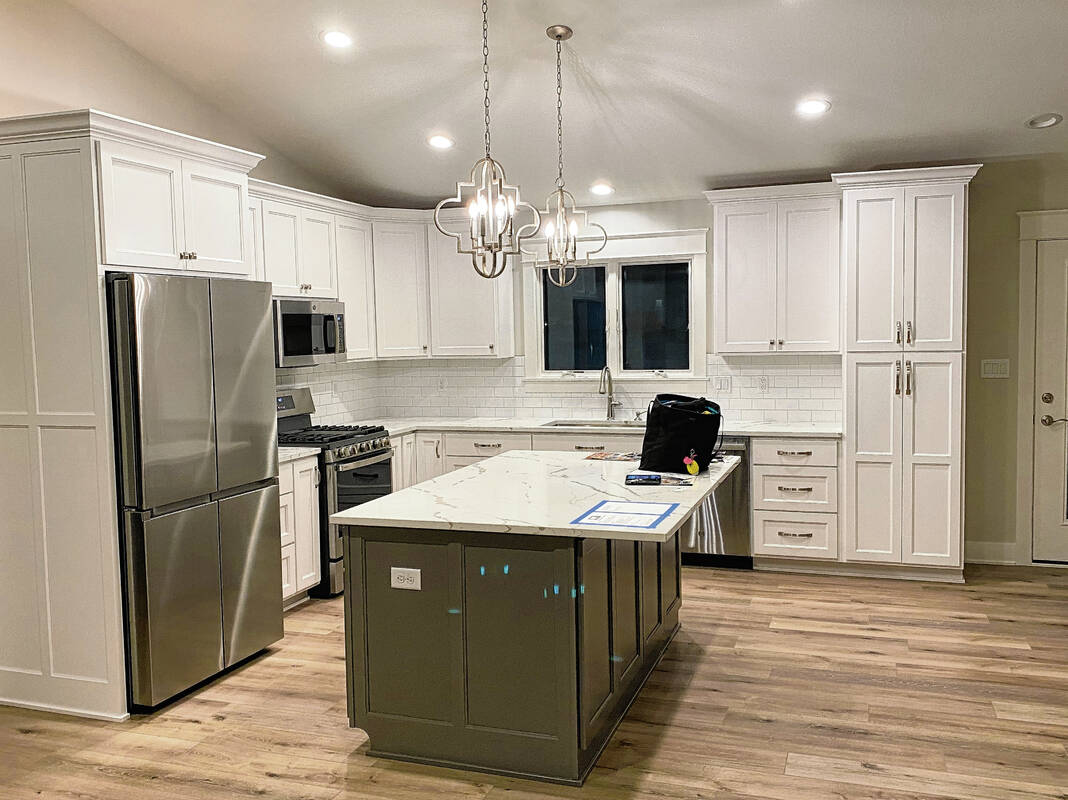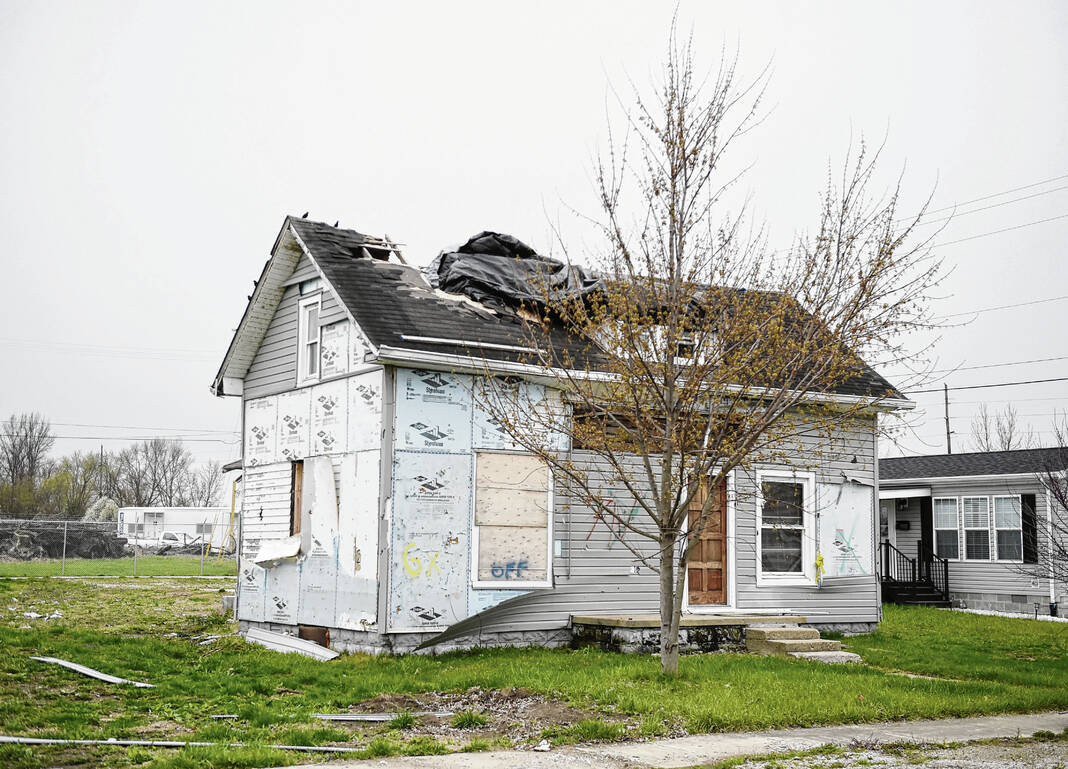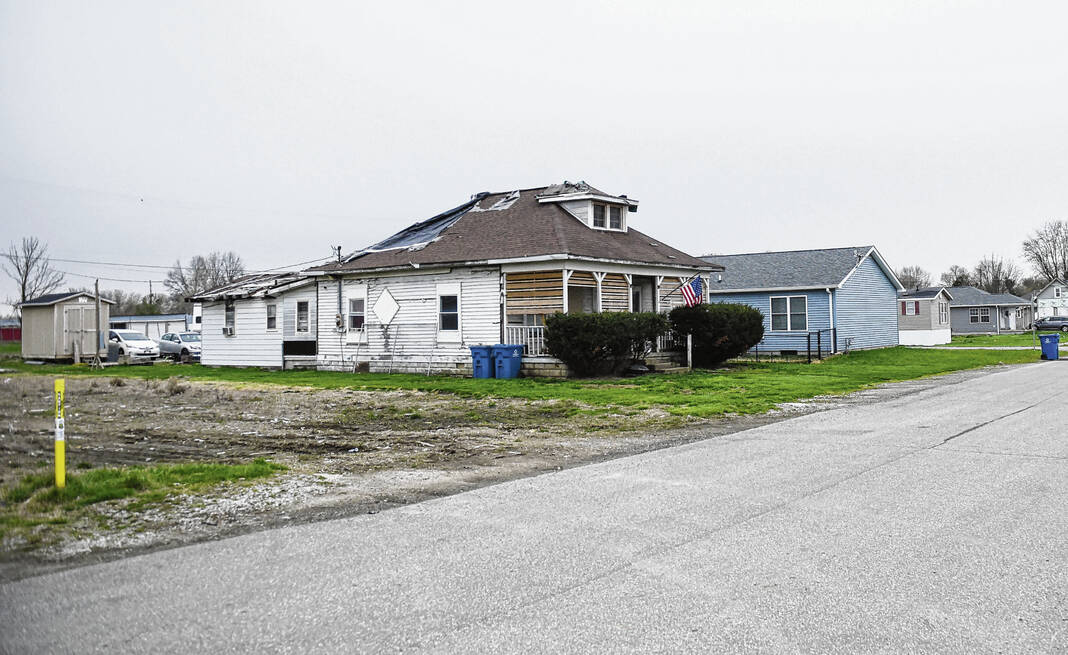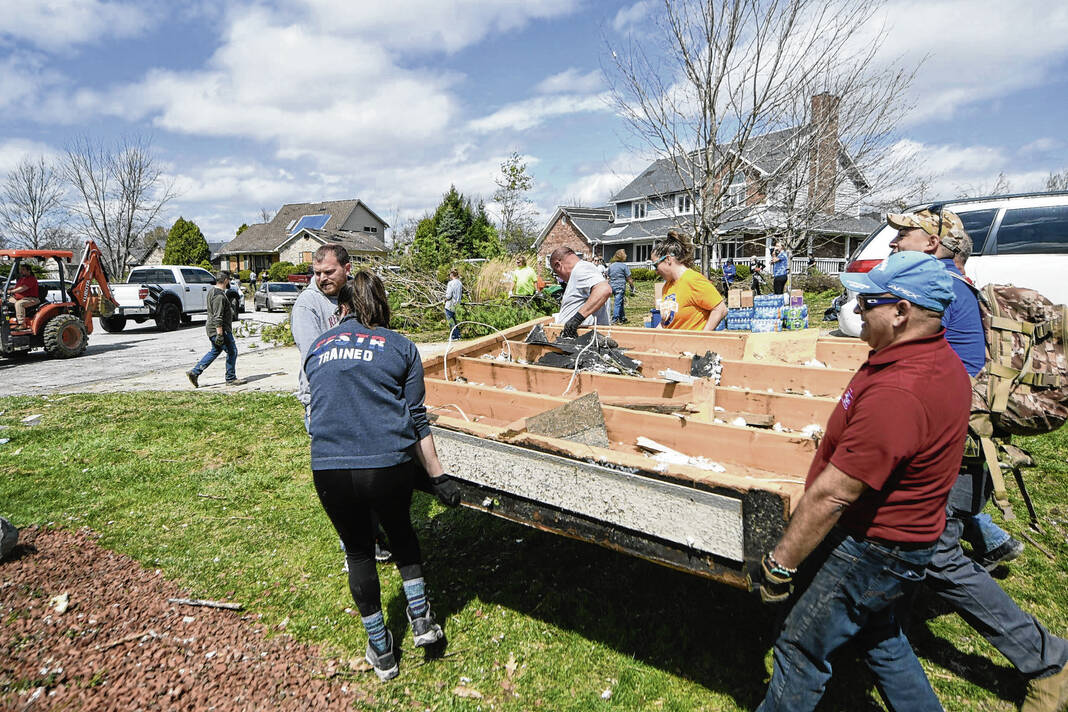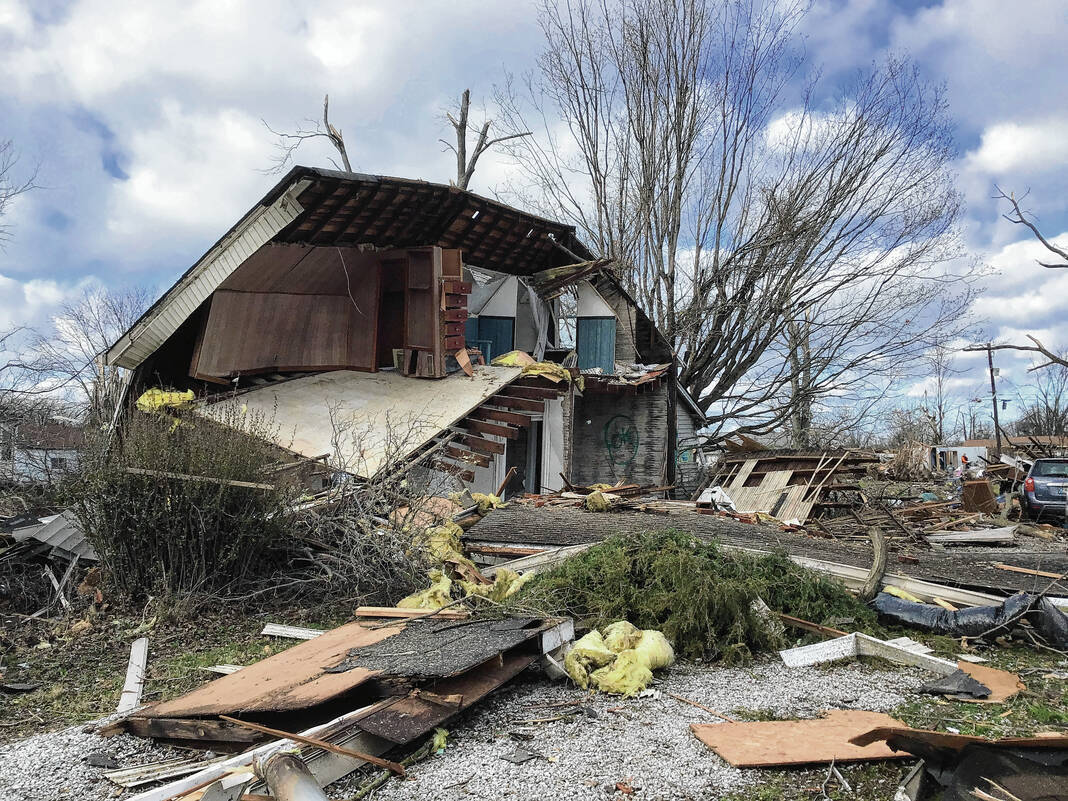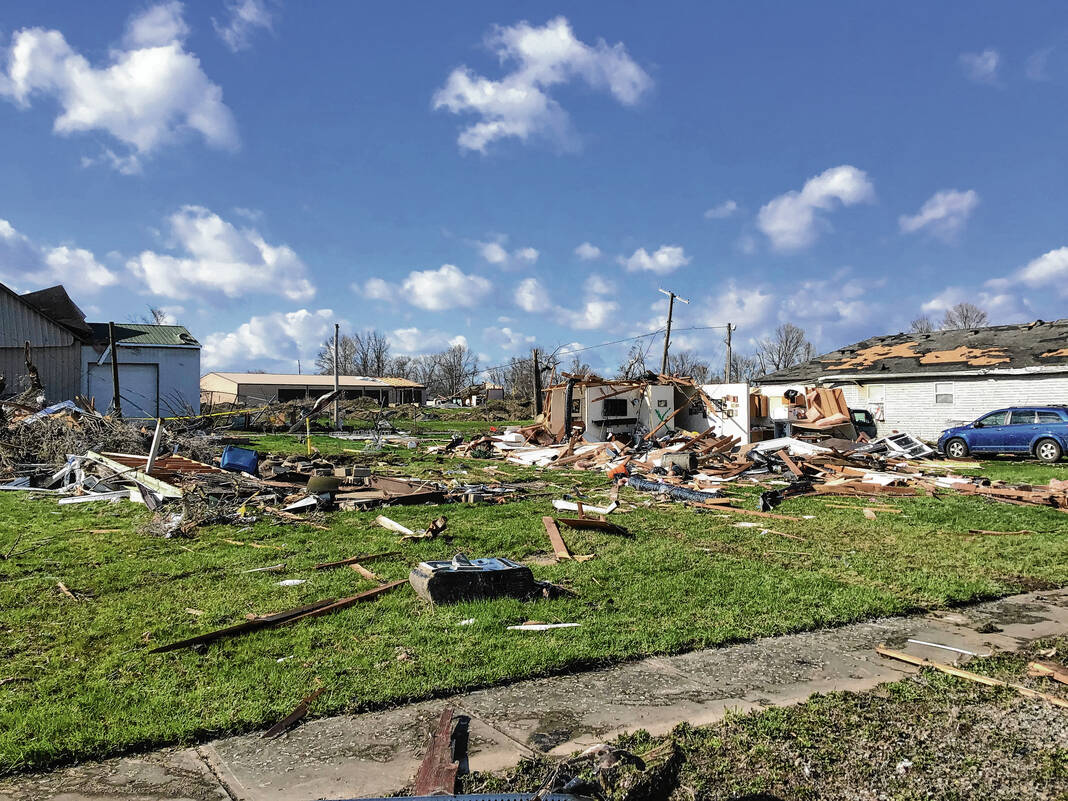Driving around the Whiteland area, most of the evidence of the devastating tornado that tore through on March 31, 2023, is gone.
Ruined houses have been torn down, and in most cases rebuilt. Downed trees, branches and other debris were long ago cleared away. Repairs have been ongoing on damaged buildings.
But scars remain.
“We’re trying to get back to normal,” said Robert Stuck, whose home was destroyed in the tornado.
One year after the tornado tore through Whiteland, residents and officials alike continue to deal with the lingering aftermath. Progress is coming gradually; while those impacted by the tornado have rebuilt or repaired their homes, other structures are still in ruins.
Looking back, one of the community’s worst moments brought out the best in its residents.
“Without having the stellar local people that we have across the board — nonprofit leadership, town and city leadership, faith-based folks, and then individual community members — this daunting situation would have been potentially crippling,” said Ross Stackhouse, pastor at HeavenEarth Church and chair of the long-term recovery group in Whiteland.
Shortly before midnight on March 31, 2023, a string of powerful storms marched across Indiana. The storms produced a string of tornadoes including the EF-3 tornado that ripped through Whiteland.
The destruction was severe. Warehouses at Mohr Logistics Park alongside I-65 were ripped apart and pieces of the buildings were flung to the opposite side of the highway. The roof on the town’s fire station was pulled back, destroying the department’s living quarters.
Town officials initially stepped forward to provide immediate need, working with nonprofits and agencies to get people temporary housing, food and starting the process of applying for insurance.
“Our main priority afterward was helping our residents get back on their feet — being able to provide them with resources or access to resources to help them get through those first few weeks after the tornado,” said Carmen Young, director of administration for the Town of Whiteland.
One of the biggest challenges for people whose homes had been damaged or destroyed was the structures had been built when the town’s zoning rules were different. For them to rebuild back under current regulations would be all but impossible.
Officials worked with the town council to waive certain building standards to prevent making a hard situation even more difficult, Young said.
“We asked them to waive certain standards we felt was appropriate from the town’s side, to not create any more hoops for the residents who had to rebuild to go through,” she said.
Entire neighborhoods were torn apart in the disaster. Robert and Amy Stuck have lived in their Park Forest home for 27 years, in a house their family helped build. The tornado tore through it in 17 seconds.
“That was the first time we weren’t prepared for a storm,” Robert Stuck said. “Stuff was still falling, drywall and stuff, when I was trying to get them out of the house.”
In the aftermath of the storm, the Stuck family struggled through the insurance process, but eventually, were able to have most of the cost of rebuilding their home covered, as well as the cost of their temporary housing.
Duke Homes rebuild their house, following a floor plan that matched their former home. In March, they started moving in, and though work remains to gather all of their possessions from other storage, they’re finally able to sleep in the rebuilt home.
“We weren’t able to get any type of storage units after the storm, so we had our stuff scattered around seven different places,” Robert Stuck said. “But we’re staying there now.”
The process of rebuilding has been arduous, navigating insurance and other delays. But the Stucks were aided every step by friends and supporters.
“It makes you appreciate life a little bit more,” Robert Stuck said.
Helping residents such as the Stucks has been the focus for HeavenEarth Church since the hours after the tornado hit. The church, located near the worst of the storm damage, worked with the United Way of Johnson County to serve as the recovery center for residents.
Other local churches and organizations, such as the IMPACT Center at Mt. Pleasant Christian Church and the Refuge in Greenwood donated as much as they could. HeavenEarth’s sanctuary was filled with supplies, as the church became a six-day-a-week distribution center.
People flocked to HeavenEarth for supplies, such as new clothes, blankets, diapers and hygiene items, paper towels, toilet paper, cleaning buckets, tarps, food, water, flashlights and batteries. More than 150 families were given vital help.
“This is kind of our church’s ethos. We feel a responsibility to this community,” Stackhouse said. ”We felt like we needed to find a way to be really tangibly involved.”
Once the immediate needs of local residents had been met, HeavenEarth focused on the next step.
“We had that curiosity of, what is still needed, and what does it look like for us to be a part of that?” Stackhouse said.
The church became instrumental in the long-term recovery. Whiteland residents were in the process of navigating the process of dealing with insurance and applying for Federal Emergency Management Agency assistance and Small Business Administration loans. A coalition of Whiteland leaders formed a Long-Term Recovery Group, made up of several committees to help those affected by disasters in the long run.
Stackhouse volunteered to be the temporary chair of the group. He has maintained that position.
“We’re still working,” he said.
The group tried to identify anyone who had tornado damage, and took them through the steps to get the relief they needed.
“We tried to see if there were unmet needs related to your disaster-caused damage, what are those needs and how can our community meet them,” Stackhouse said. “That might be construction; for one client, we paid for a new roof for them and let them through the construction process from beginning to end. For some people, we had volunteers move stuff.”
A year later, the group is still helping residents navigate the recovery process, including people who didn’t connect with the group early in the process. There have also been situations where people thought they were OK, only to experience gaps in insurance or problems with contractors.
The long-term recovery group is down to its last cases, Stackhouse said.
“They say disasters start local and end local. That’s partly true, because it makes it sound like there’s something giant in the middle, and that’s not true. Really, the beginning, middle and end, it’s all local,” he said.


